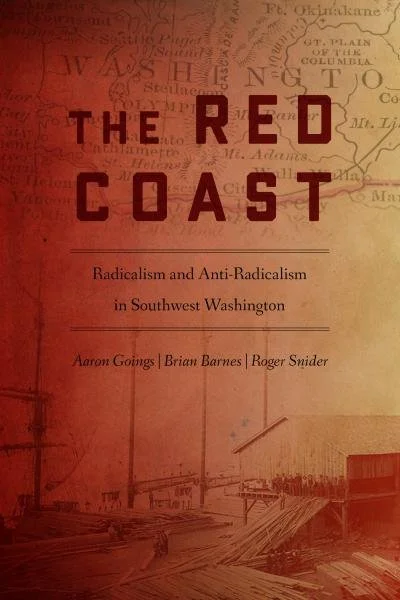The Red Coast
Radicalism and Anti-Radicalism in Southwest Washington
The Red Coast is a lively and readable informal history of the labor, left-wing, and progressive activists who lived, worked, and organized in southwest Washington State from the late nineteenth century until World War II. The book serves as a hidden history for a region frequently identified with conservatism, rescuing these working-class activists from obscurity and placing them at the center of southwest Washington’s history.
With a focus on socialists, militant unionists, Wobblies, "Red" Finns, and Communists, The Red Coast covers the people, places, and events that made history—well-known events like the 1919 Armistice Day Tragedy in Centralia and the murders of labor activists William McKay and Laura Law in Aberdeen as well as lesser-known events that have been lost to posterity until now.
The Red Coast also delves deep into the lives and work of the region’s anti-radical forces, examining the collective efforts of employers, news editors, and vigilantes to combat working-class organization. Topics include the Wobblies, the labor wars of the 1910s and 1930s, and the lumber and maritime industries. Labor historians, scholars, and general readers with interest in the working-class history of the Pacific Northwest will welcome this comprehensive and accessible account.
Praise
The first study of Washington’s famed coastal regions and the labor and left organizing that drove so much of its history.
“[The Red Coast] explores the intersections of class, gender, ethnicity, and race in an era when much of the region’s bosses were White men who united to assert themselves as the rightful leaders of American society. While most scholarship on Pacific Coast radical labor discusses the role of male wage earners, this book contributes important new material about how women also engaged in the class struggle that shaped their lives and the region’s history. . . . Using an array of sources, including local newspapers and union publications as well as court and police records, The Red Coast explores the lesser-known areas of radicalism in southwest Washington.”
-Aaron Jesch, Oregon Historical Quarterly
“It is the authors’ skill at weaving a story of class formation—a class in and for itself—out of the economic, political, and cultural braids of work and community life left by those who made Southwest Washington red that makes The Red Coast a remarkable book, and all the more so to have done it at a time, ours, when identity politics has pushed class, as an analytical concept, to the margins of thought.”
-Jerry Lembcke, co-author of One Union in Wood: A Political History of The International Woodworkers of America.
